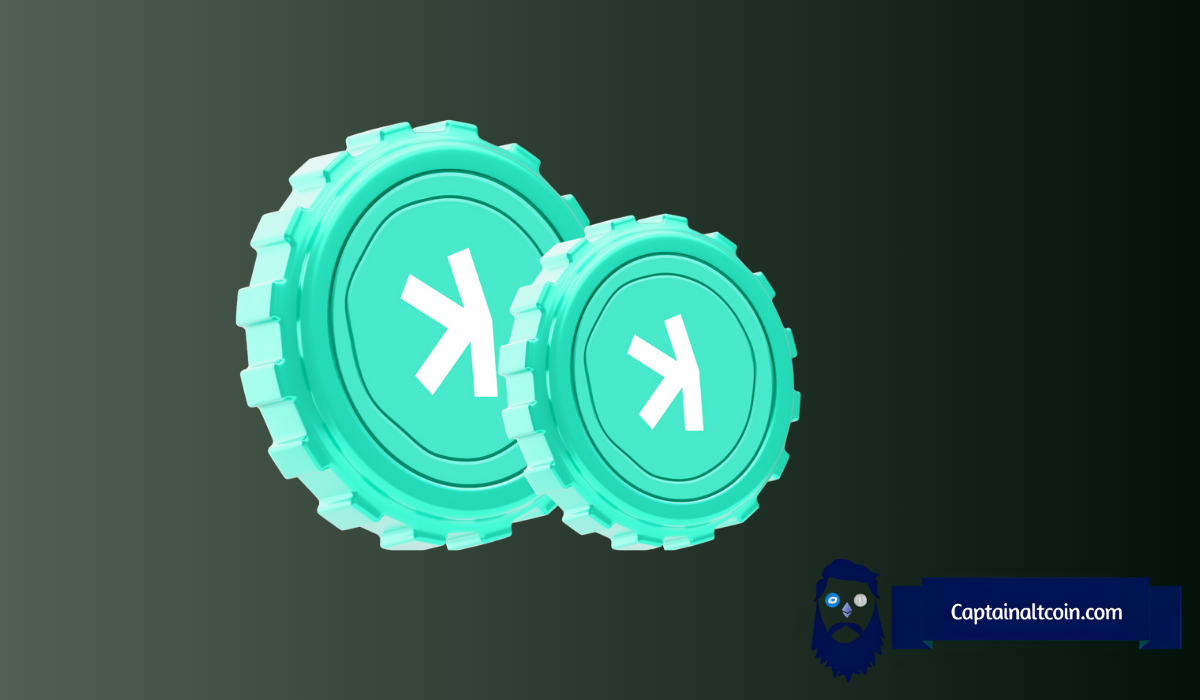
The Kaspa price finally broke $0.080 resistance again after pumping 10% last week. However, KAS community is not happy with something like this and there are many 10-50x price predictions floatin around on X.
‘Kaspa Report’ X profile who has a relatively small following of 5k still, posts viral, extremely useful threads about what’s going on around Kaspa on exchanges and beyond. They again posted a thread last night about some interesting news about KAS on different exchanges.
What you'll learn 👉
The CoinEx Flash Crash Phenomenon
Last month, cryptocurrency exchange CoinEx witnessed an extraordinary event when highly leveraged margin traders manipulated Kaspa’s price to nearly zero. This wasn’t just another crypto flash crash – it was a powerful demonstration of exactly why decentralized currencies like Kaspa exist in the first place.
The flash crash pushed Kaspa’s price down to just $0.004621 against USDT on CoinEx. Then something amazing happened. The price shot back up, rising over 1,800% from its lowest point. But the real story wasn’t about the crash. It was about what came next.
Last month, highly leveraged margin traders on CoinEx manipulated Kaspa's price to nearly zero on that exchange.https://t.co/HjbVH7Hcnr
— Kaspa Report (@KaspaReport) March 24, 2025
The crash triggered an unexpected supply shock on the exchange. In just five minutes, the majority of all Kaspa disappeared from CoinEx’s wallet. The reason was simple but profound – there simply wasn’t enough Kaspa on the exchange to support the excessive short margin trades that had been placed.
Each time CoinEx attempted to replenish its Kaspa wallet, leveraged margin traders quickly drained it again. This cycle continued until the exchange had no choice but to halt Kaspa margin trading completely as of February 10, 2025.
What happened on CoinEx represented a perfect storm. Three critical factors came together: leveraged derivative trading that artificially suppressed Kaspa’s price, active spot trading of Kaspa, and unrestricted Kaspa withdrawals. This combination created an environment where price manipulation ultimately backfired on those attempting to control the market.
Kaspa’s inherently decentralized nature proved to be its greatest strength during this incident. As centralized entities tried to suppress its price, they inadvertently subsidized KAS for holders who continued to accumulate through exchanges that allowed withdrawals. This dynamic created a situation where price suppression actually amplified accumulation by dedicated holders, making manipulators increasingly vulnerable to a short squeeze.
Resilience Against Market Manipulation
The incident demonstrates how Kaspa’s design makes it remarkably resistant to manipulation by centralized entities. Through what Kaspa Report calls “unparalleled decentralizing power,” Kaspa appears positioned to defeat price manipulators and challenge centralized market control.
This flash crash incident wasn’t a failure of the Kaspa system but rather a validation of its core principles. It offers a glimpse into a potential future where decentralized finance becomes the standard and today’s centralized markets may eventually be viewed as outdated relics of a less evolved financial era.
The CoinEx crash was a big win for Kaspa fans. It proved their point. Even when big players try to mess with the market, truly decentralized coins like Kaspa can fight back. What looked like a disaster turned into a perfect example of why Kaspa works.
Read also: Why Kaspa Miners Are Smiling: Massive KAS Fee Surge Signals a Price Comeback
MEXC’s Withdrawal Restrictions Raise Concerns
But CoinEx isn’t the only exchange causing problems for Kaspa users. Kaspa Report recently revealed that MEXC has been blocking Kaspa withdrawals for over 206 hours – that’s more than 8 days straight. The exchange claims it’s just doing “wallet maintenance” but hasn’t said when users can withdraw their coins again.
This isn’t how serious financial services should work. Good platforms aim for 99.999% uptime, which means just 5 minutes of downtime per year. But MEXC has stopped KAS withdrawals for days or weeks many times in the past year.
Kaspa Report did some digging using Kaspalytics. They found that when MEXC allows withdrawals, about 3.1 to 4.7 million KAS leaves the exchange each day. This doesn’t count KAS moved between MEXC’s own wallets.
In this chart, we show what the known exchange holdings would look like if MEXC had not halted withdrawals. We estimate that there would be between 2.92 and 2.93 billion KAS on known exchanges. pic.twitter.com/Co8NakQ37T
— Kaspa Report (@KaspaReport) March 24, 2025
They even made a chart showing what exchange holdings would look like if MEXC hadn’t stopped withdrawals. Their estimate shows there would be between 2.92 and 2.93 billion KAS on known exchanges.
The Case for True Decentralization
These exchange problems highlight exactly why Kaspa’s core idea matters so much. When exchanges can block users from their own money, it shows why truly decentralized systems are needed. Both the CoinEx crash and the MEXC withdrawal blocks prove that centralized control of crypto goes against everything these currencies stand for.
For Kaspa fans, these incidents aren’t just frustrating news – they’re proof that their project is on the right track. As more traders face these kinds of exchange problems, the value of Kaspa’s approach becomes clearer. The project’s focus on true decentralization might be exactly what the crypto world needs right now.
Read also: Why Kaspa Miner Capitulation May Signal a Bottom for KAS Price
Subscribe to our YouTube channel for daily crypto updates, market insights, and expert analysis.
We recommend eToro
Wide range of assets: cryptocurrencies alongside other investment products such as stocks and ETFs.
Copy trading: allows users to copy the trades of leading traders, for free.
User-friendly: eToro’s web-based platform and mobile app are user-friendly and easy to navigate.









